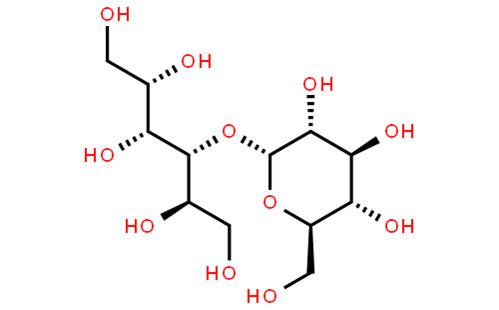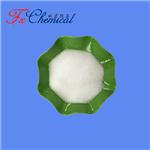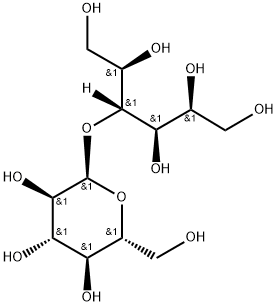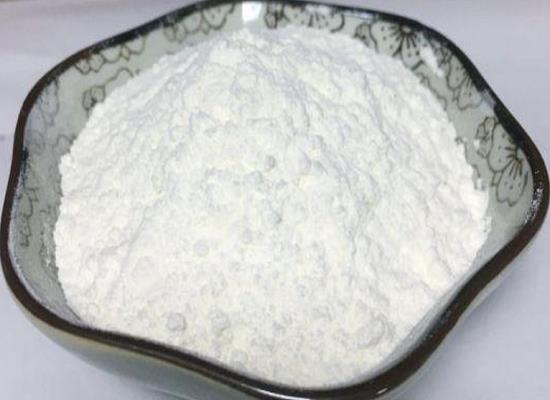Maltitol: A comprehensive analysis of a new functional sweetener
Introduction
With the improvement of modern living standards and the enhancement of health awareness, people's requirements for food are no longer limited to delicious taste, but pay more attention to its nutritional value and health impact. In this context, Maltitol, as a new type of functional sweetener, has gradually attracted wide attention due to its unique characteristics of low calorie, high sweetness, and good safety. This paper will make a comprehensive analysis of its basic nature, functional characteristics, production process, application field, and safety, in order to provide a reference for relevant practitioners and consumers.
Basic nature
Chemical structure and naming
Maltitol, chemically known as 1, 4-O-α-D-glucopyranoyl-D-sorbitol, is a disaccharide composed of 1 molecule of glucose linked to a sorbitol by an α-1, 4-bond. Its molecular formula is C12H24O11 and its relative molecular mass is 344.31. Also known as hydrogenated maltose, it is a colorless transparent crystal or colorless transparent neutral viscous liquid, easily soluble in water but insoluble in methanol and ethanol.1

Physical properties
Maltitol has a melting point of about 135-140℃ and a crystal melting point of 148-151℃. With a density of about 1.36 g/cm³, pure maltitol is colorless and transparent, stable to heat and acid. In addition, it has good moisture retention and non-fermentability, which makes it a wide application prospect in food processing.2
Functional characteristics
Low calories
The caloric output per gram of maltitol is about 2.4 kcal, much lower than the 3.89 kcal per gram of sucrose. This property makes it an ideal sweetener for low-calorie foods, especially for people who need to control their caloric intake, such as diabetics and obese people.
High sweetness
The sweetness of maltitol is about 0.9 times that of sucrose, and the taste is pure and close to sucrose. This allows it to retain the sweetness of foods while reducing calorie intake when replacing sucrose.
Good security
Maltitol has good safety and is widely used in food, medicine, and other fields. It is not metabolized by oral microorganisms, does not cause dental caries, and is suitable as a sweetener for children's food. In addition, it is basically not absorbed in the human body, does not increase blood sugar value after consumption, and is friendly to diabetic patients.3
Strong stability
Maltitol has good temperature and chemical stability and is not easily decomposed even when heated to higher temperatures. This feature allows the food to maintain its sweetness and stability during processing, extending the shelf life of the food.4
Promote calcium absorption
Animal experiments have shown that maltitol can promote calcium absorption in the intestine and help increase bone mass and bone strength. This feature has potential application value in the field of health food.
Does not stimulate insulin secretion
Because maltitol is difficult to digest and absorb, the blood sugar value rises little, and the secretion of insulin, which is necessary for glucose metabolism, is not significantly stimulated. This property is beneficial for blood sugar control in diabetics.
Curb fat accumulation
Replacing granulated sugar with maltitol in high-fat foods can reduce excessive accumulation of fat in the body. This is because it does not stimulate insulin secretion, thus avoiding fat accumulation caused by increased activity of lipoprotein decomposing enzymes.
Production technology
The production process of maltitol mainly includes a chemical synthesis method and an enzyme conversion method.4
Chemical synthesis
Maltitol was synthesized from glucose by a chemical reaction process. This method is relatively simple, but may involve the generation of some harmful substances, and requires strict control of reaction conditions to ensure the safety of the product.
Enzyme conversion method
The enzyme conversion method uses specific enzymes to convert starch into maltitol. This method has the advantages of mild reaction conditions and high product purity, but the cost is relatively high. With the continuous development of enzyme preparation technology, enzyme conversion is expected to become the mainstream process in the future.5
Application field
Food processing
Maltitol is widely used in the production of cakes, cookies, candies, beverages, ice cream, and other foods. Its low calorie, high sweetness, good safety, and other characteristics make it the ideal sweetener for sugar-free food, low-sugar food. At the same time, its moisturizing and non-fermentative properties also help to extend the shelf life of food and maintain the taste of food.
The field of medicine
In the field of medicine, maltitol can be used to make drugs, health products, and so on. It does not cause caries, does not stimulate insulin secretion and other characteristics make maltitol the ideal sweetener for diabetic patients, obese people, and other specific groups. In addition, maltitol's role in promoting calcium absorption also makes it a potential application in the field of bone health.
Security
Maltitol has good safety and is widely used in food, medicine, and other fields. However, excessive intake may cause some adverse effects, such as bloating, diarrhea, and stomach upset. Therefore, you should pay attention to appropriate intake when using, and choose according to your personal situation. In particular, sensitive people such as lactose intolerant people and people with diabetes should consult a doctor's advice before use.
Conclusion and Prospect
As a new type of functional sweetener, maltitol has many advantages, such as low calorie, high sweetness, and good safety, and has a wide application prospect in food, medicine, and other fields. With the continuous increase in people's demand for healthy food and the continuous progress of science and technology, the production process of maltitol will be continuously optimized and improved, and its application field will be further expanded. In the future, it is expected to become one of the important ingredients of more healthy foods and healthcare products and contribute more to people's healthy lives.
References:
[1] XIUTING HU . Biosynthesis, structural characteristics and prebiotic properties of maltitol-based acceptor products[J]. Journal of Functional Foods, 2021, 78. DOI:10.1016/j.jff.2021.104374.[2] MIN HUANG. Xylitol and Maltitol Improve the Rheological Property of Kappa-Carrageenan.[J]. ACS Applied Energy Materials, 2021. DOI:10.3390/foods11010051.
[3] F. JAVANMARDI. Study on the Effect of Xylitol and Maltitol as Alternative Sweeteners in Sponge Cakes[J]. Current Nutrition & Food Science, 2020, 15 1: 403-409. DOI:10.2174/1573401315666190206143440.
[4] SHENGXIANG GONG. Study on the effects of sugar alcohols and Angelica keiskei flour on cookie quality, antioxidant, and nutrition[J]. Cereal Chemistry, 2020, 97 3: 551-732. DOI:10.1002/cche.10287.
[5] DANYU LV . Ultra-small magnetic Candida antarctica lipase B nanoreactors for enzyme synthesis of bixin-maltitol ester[J]. Food Chemistry, 2023, 421. DOI:10.1016/j.foodchem.2023.136132.
Lastest Price from Maltitol manufacturers

US $0.00/KG2025-04-21
- CAS:
- 585-88-6
- Min. Order:
- 1KG
- Purity:
- 98%min
- Supply Ability:
- 30tons/month

US $1.00/KG2025-04-21
- CAS:
- 585-88-6
- Min. Order:
- 1KG
- Purity:
- 99%
- Supply Ability:
- 10 mt


